Idea by
Saúl Ajuria Fernández
Call for ideas 2020
Urban Droneport
Urban Droneport

- New alliances
Designing buildings taking into account the problems that will arise in the future allows us to propose new ideas that make architecture an engine of development and innovation.
The project is an incentive to generate new designs in the fields of architecture, urban planning and the network that connects both fields. The idea behind the project promotes rethinking the way we will live in the future and how architecture will be part of it. We must develop the way in which people will receive their packages, how they will move around the city and therefore force us to design under new parameters to make all this possible and improve people life´s quality.
It is a transformative project of our living environment that proposes a cultural, social and spatial innovation of architecture and urbanism.
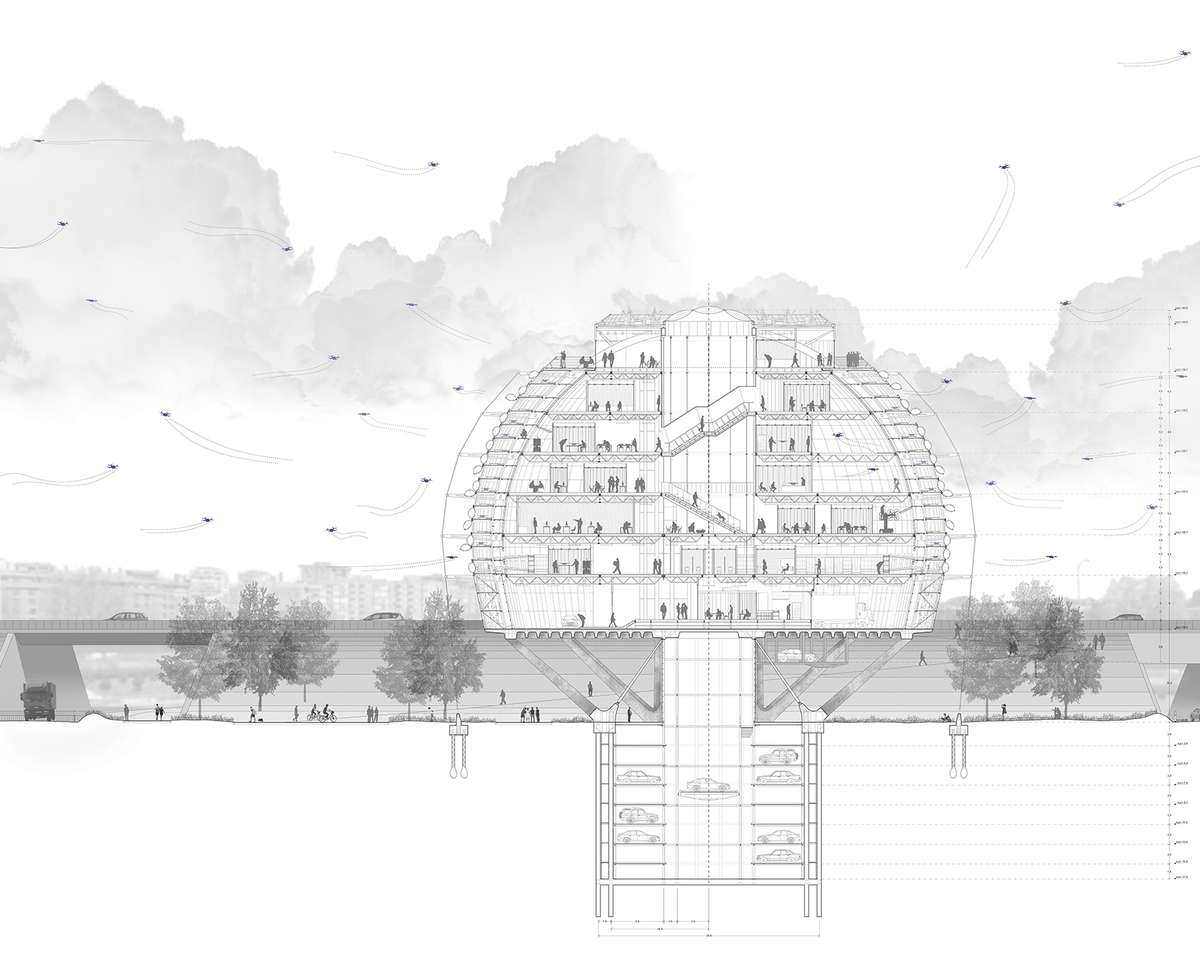
Being located in a node gives the project a direct communication with the highway for a fast connection with the transit centers of the different delivery companies and, at the same time, it gives the possibility to replicate the project in other highway nodes, allowing to cover all the city center.

Due to the location of the building in an aggressive, noisy and heavily contaminated environment, it is decided to isolate the Urban Droneport from the surroundings and focus it into the inner relationship, enhanced by a central courtyard, which enables the entrance of light and the visual relationship between the different floors. The location and design of the structure also goes in the same line and allows free space inside.
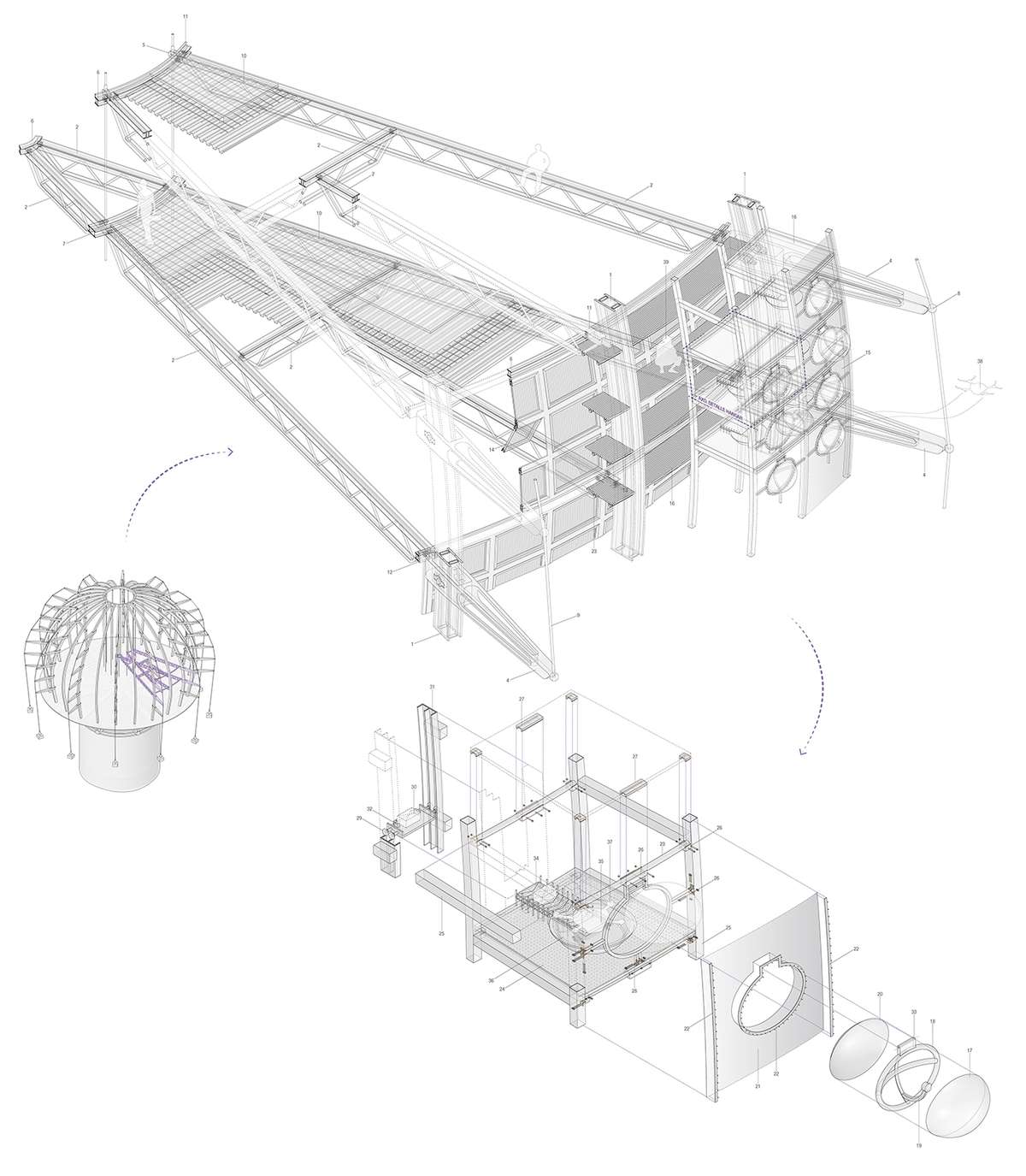
Focusing on the constructive and structural aspects of the building, the following principles govern: prefabrication, modularity and rationality. It seeks to minimize the elements and types of joints. We opt for a metal structure with dry joints which allows both the assembly/disassembly and its expansion or modification. The building is modulated so that the details of its construction are solved with only one of its twelve slices.

The project is based on a process architecture, which optimizes the systems operation and contributes to boost all aspects for the development of the new infrastructure. After analyzing all the processes that will take place in the project, a spherical formalization is chosen, which makes possible a circular development in both plant and section.
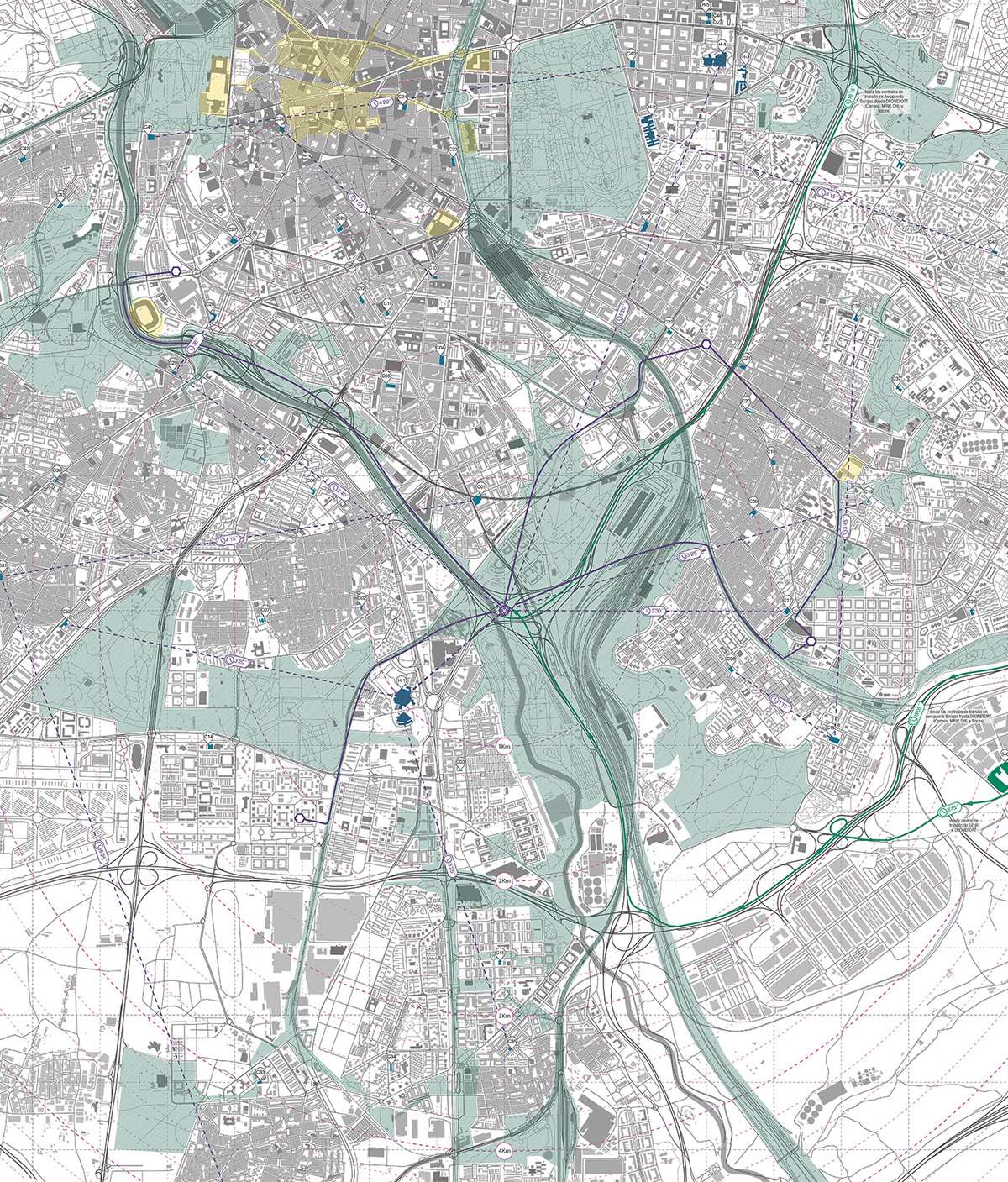
To enable the operation of this new system, a new infrastructure network is designed, which, together with the Logistics Center, is adapted to the existing city. The network is based on three actions: use of the city as a three-dimensional map that allows us to generate this new network physically disconnected from the existing ones, the installation of specific elements in the buildings that integrate the existing city with the new network and the design of new post boxes.
Urban Droneport
Urban Droneport

- New alliances
Designing buildings taking into account the problems that will arise in the future allows us to propose new ideas that make architecture an engine of development and innovation.
The project is an incentive to generate new designs in the fields of architecture, urban planning and the network that connects both fields. The idea behind the project promotes rethinking the way we will live in the future and how architecture will be part of it. We must develop the way in which people will receive their packages, how they will move around the city and therefore force us to design under new parameters to make all this possible and improve people life´s quality.
It is a transformative project of our living environment that proposes a cultural, social and spatial innovation of architecture and urbanism.
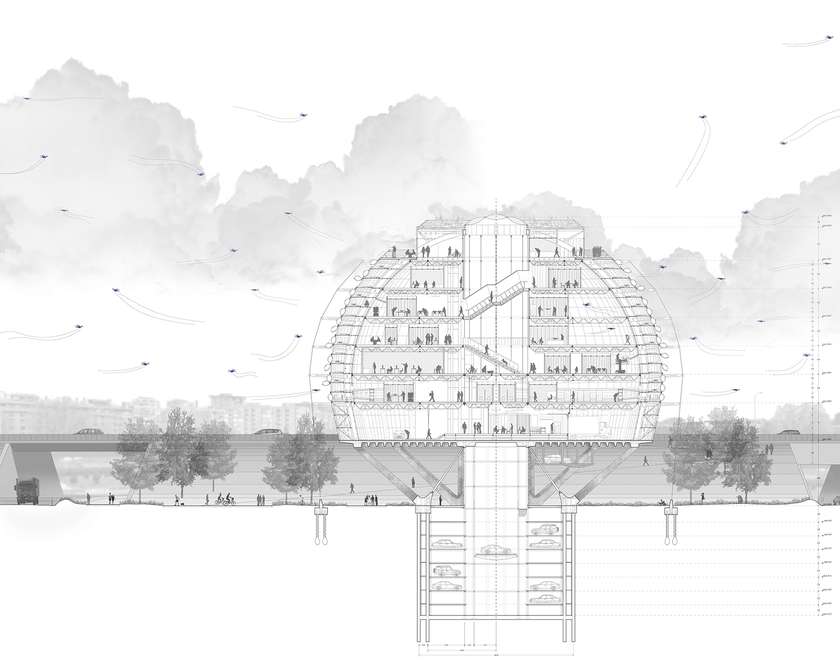
Being located in a node gives the project a direct communication with the highway for a fast connection with the transit centers of the different delivery companies and, at the same time, it gives the possibility to replicate the project in other highway nodes, allowing to cover all the city center.
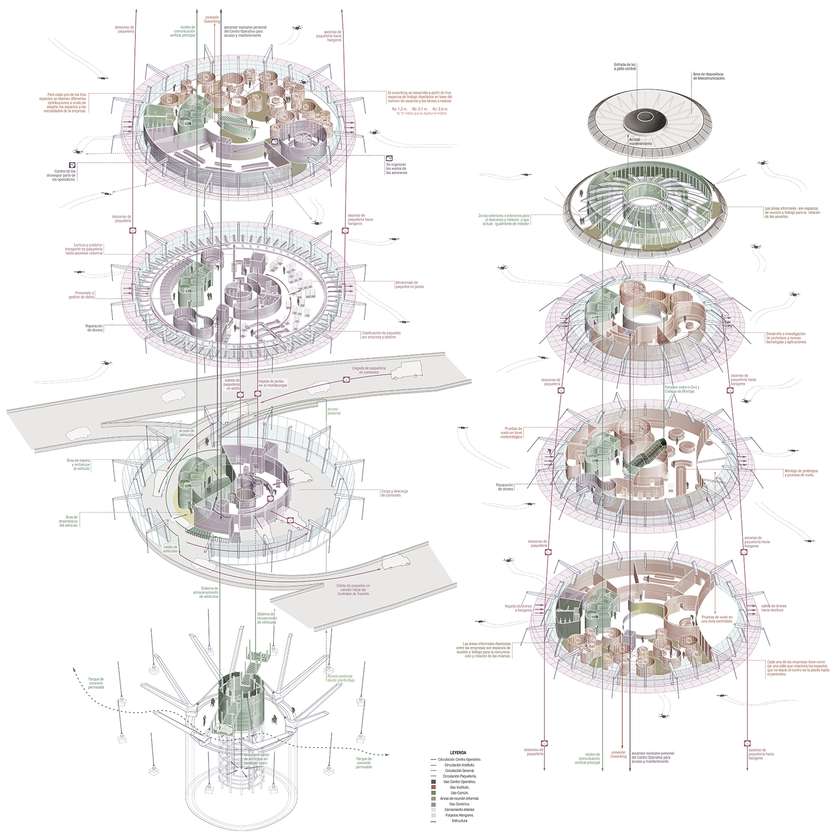
Due to the location of the building in an aggressive, noisy and heavily contaminated environment, it is decided to isolate the Urban Droneport from the surroundings and focus it into the inner relationship, enhanced by a central courtyard, which enables the entrance of light and the visual relationship between the different floors. The location and design of the structure also goes in the same line and allows free space inside.
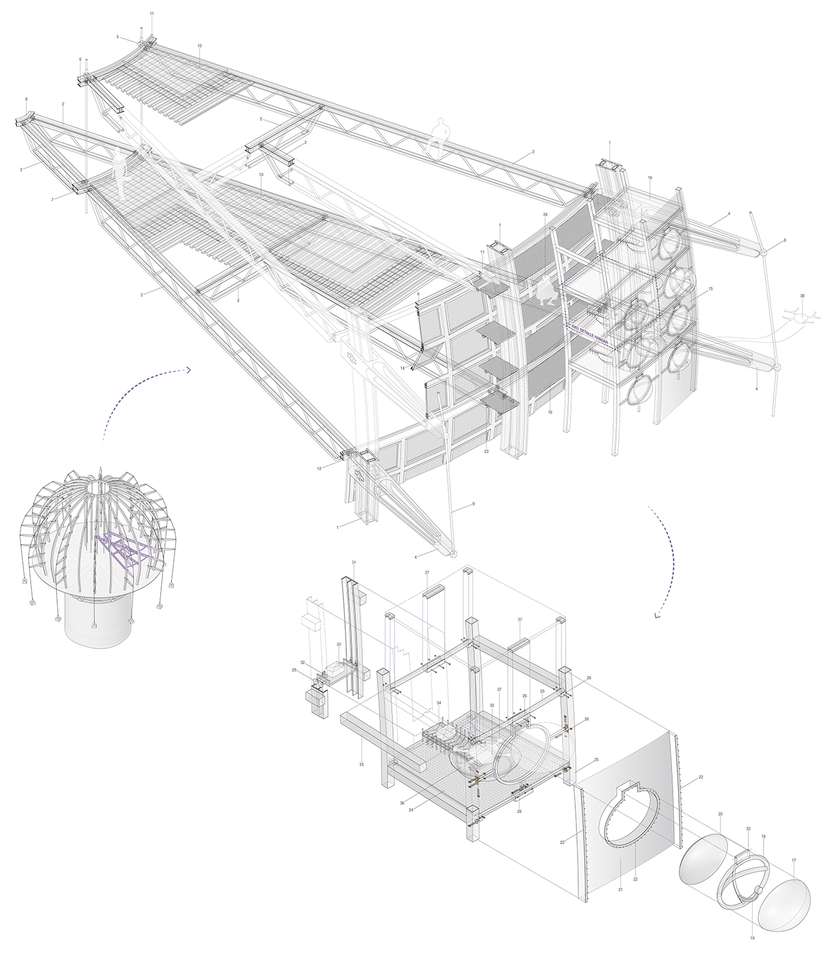
Focusing on the constructive and structural aspects of the building, the following principles govern: prefabrication, modularity and rationality. It seeks to minimize the elements and types of joints. We opt for a metal structure with dry joints which allows both the assembly/disassembly and its expansion or modification. The building is modulated so that the details of its construction are solved with only one of its twelve slices.
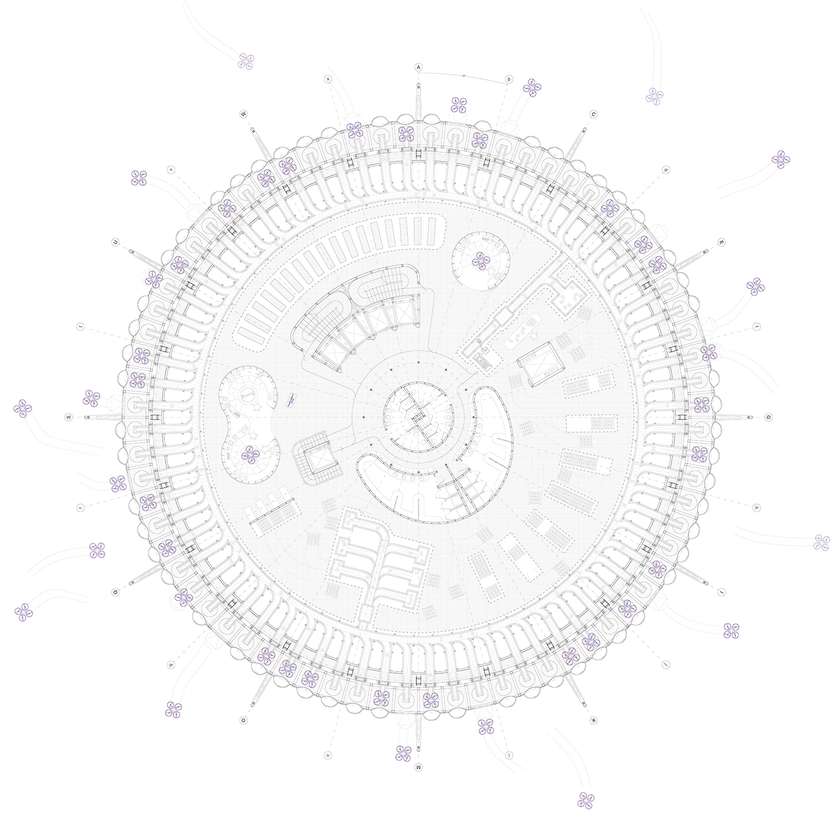
The project is based on a process architecture, which optimizes the systems operation and contributes to boost all aspects for the development of the new infrastructure. After analyzing all the processes that will take place in the project, a spherical formalization is chosen, which makes possible a circular development in both plant and section.
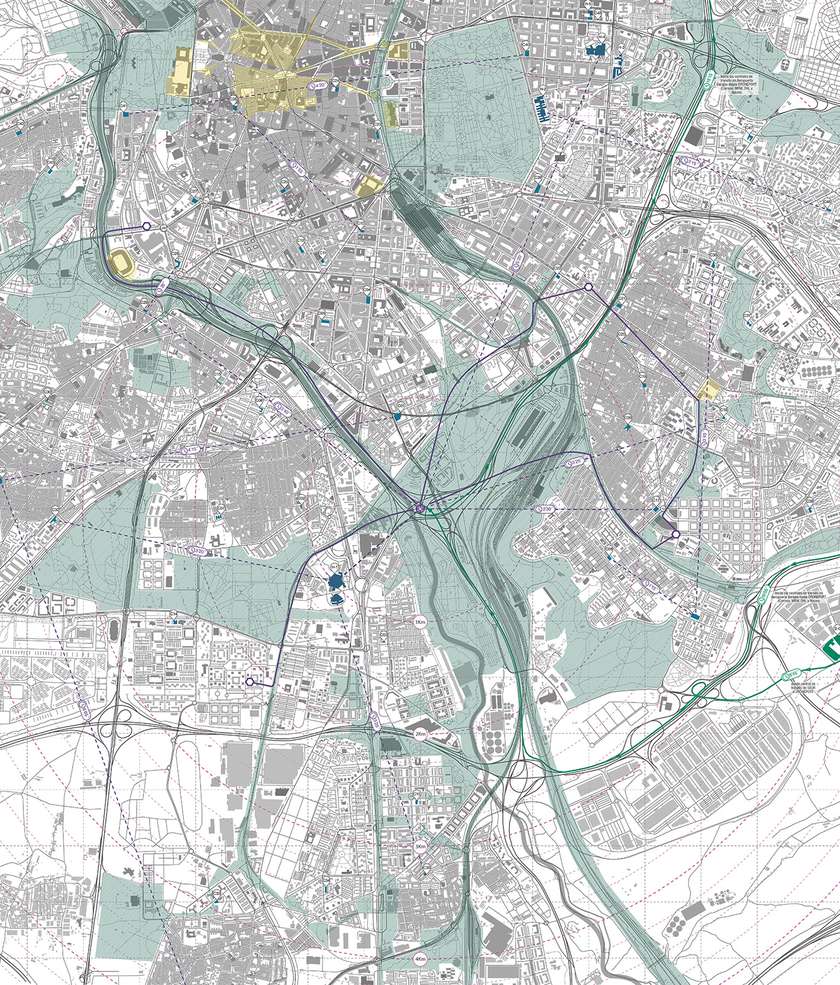
To enable the operation of this new system, a new infrastructure network is designed, which, together with the Logistics Center, is adapted to the existing city. The network is based on three actions: use of the city as a three-dimensional map that allows us to generate this new network physically disconnected from the existing ones, the installation of specific elements in the buildings that integrate the existing city with the new network and the design of new post boxes.